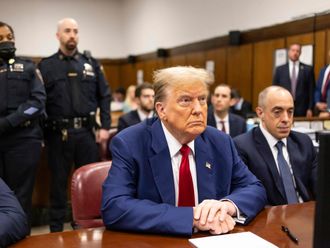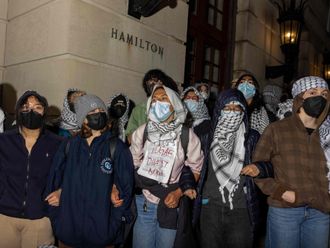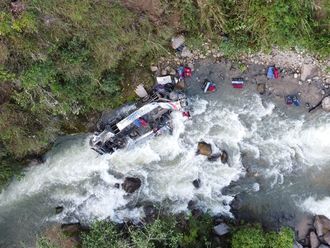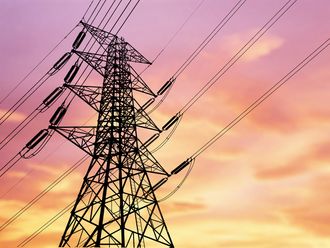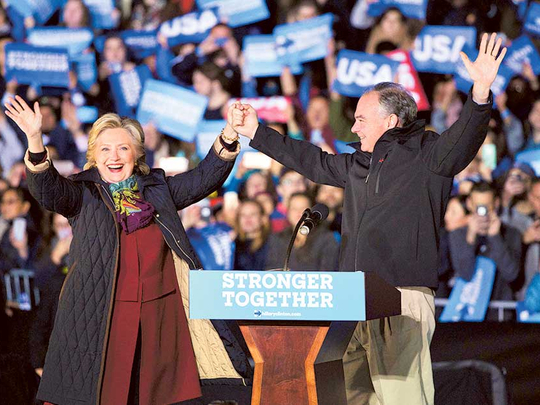
Hillary Clinton made the case for herself in the race against Donald Trump during a rally in Pittsburgh, and in a sign of her campaign’s increasing outreach, also made a pitch for the efforts by Democrats to gain control of the Senate.
Rising in the polls in Pennsylvania, Clinton spoke at length on behalf of Katie McGinty, the Democrat challenging Republican Senator Pat Toomey, saying the former environmental official would better represent the people of the state.
“He still refuses to stand up to Donald Trump,” Clinton said of Toomey. “A lot of Republicans have, they have had the grit and guts to stand up and say, ‘He does not represent me.’”
Echoing a theme Trump has expressed in calls to stop the influence of lobbyists and “drain the swamp” in Washington, Clinton said she would oppose lawmakers who do the bidding of lobbyists and lawyers. “Are members of Congress, members of the Senate, going to be on the side of the rich and the powerful and the wealthy, or on your side?’’ she asked.
Clinton and Trump focused on battleground states of Pennsylvania and Ohio on Saturday, with only 17 days remaining until the election as the race turns to its get-out-the-vote phase following the third and final debate between the pair on October 19.
Joint appearance
Clinton appeared with running mate Tim Kaine in Pittsburgh and was scheduled to appear in Philadelphia later in the evening. A RealClearPolitics average of recent polls shows she has a lead of 6.2 percentage points over Trump in Pennsylvania. Trump will end the day with an Ohio rally after appearances in Pennsylvania and Virginia.
Kaine, appearing with Clinton for the first time since Labour Day, drew a loud ovation at Taylor Allderdice High School when he asked whether it’s time for the US to have a woman president. He also said Trump started his campaign insulting Mexicans and women and now, at the end of the race, is insulting the “pillars of American democracy” by refusing to say whether he accept the election results.
“He’s losing, and he knows it,” Kaine said. “This guy can’t take responsibility for anything.”
Trump is trying to reverse a slide that started with a lacklustre first debate on September 26 and accelerated with the release of a 2005 tape of him making lewd comments about women. Several women subsequently accused the billionaire of groping them in the past, and Trump responded by escalating his rhetoric that the election is “rigged.” On Saturday he vowed to sue the women after the election.
Trump has also refused to say whether he would concede if he lost, drawing condemnation from Democrats and some Republicans who say it threatens the peaceful transition of power that’s a staple of US democracy.
“Trump’s claims of voter fraud and his refusal to say he will accept the results set an alarming precedent,” Donna Brazile, the interim chair of the Democratic National Committee, wrote in a post on the blogging website Medium on Saturday.
A Bloomberg Politics national poll released on October 19 showed that Clinton leads Trump 50 per cent to 41 per cent among likely voters in a theoretical two-way race. The survey also showed slices of the electorate, including men and independents, moving away from the billionaire businessman in the campaign’s final days.
On Saturday, Trump offered a vision for his first 100 days as president, in what his campaign called a closing argument after he vowed on Friday to finish the race with “no regrets.” Many of the policies described by Trump on Saturday have been features of his campaign for months.
Buoyed by Trump’s struggles, Clinton has sought to expand her outreach. Her campaign has started to target traditionally Republican states such as Arizona and Utah and is seeking to bolster Congressional races in battleground states to help Democrats potentially flip control of the Senate and, less likely, the House.
On the campaign trail, Clinton is hammering the theme that Trump is unfit to be president as a way to motivate supporters to get out and vote, while also looking ahead to governing if she wins. She’s talked about the need to “repair the damage’’ that Trump has caused with divisions in the US and questions raised among overseas allies and adversaries alike.
Ohio and Pennsylvania are two states that analysts say Trump must win if he has any hope of assembling the 270 Electoral College votes needed for the presidency. No Republican has won the White House without capturing Ohio.
Toss-up race
The billionaire leads Clinton in Ohio by less than a percentage point, according to a RealClearPolitics average. Clinton spokesman Brian Fallon said the advantage Trump had in the state after Labor Day in early September has been erased.
The Trump campaign has severed its ties with the Ohio Republican Party, which is handling get-out-the-vote efforts in the state but backed Governor John Kasich in the party’s primary. As polls in the state have tightened following Trump’s stumbles, Clinton has mobilised an army of volunteers in 93 field offices to register and turn out voters.
“Ohio is really a symbol of the progress that we made in the last two weeks since the first debate,” Fallon said on Friday.


